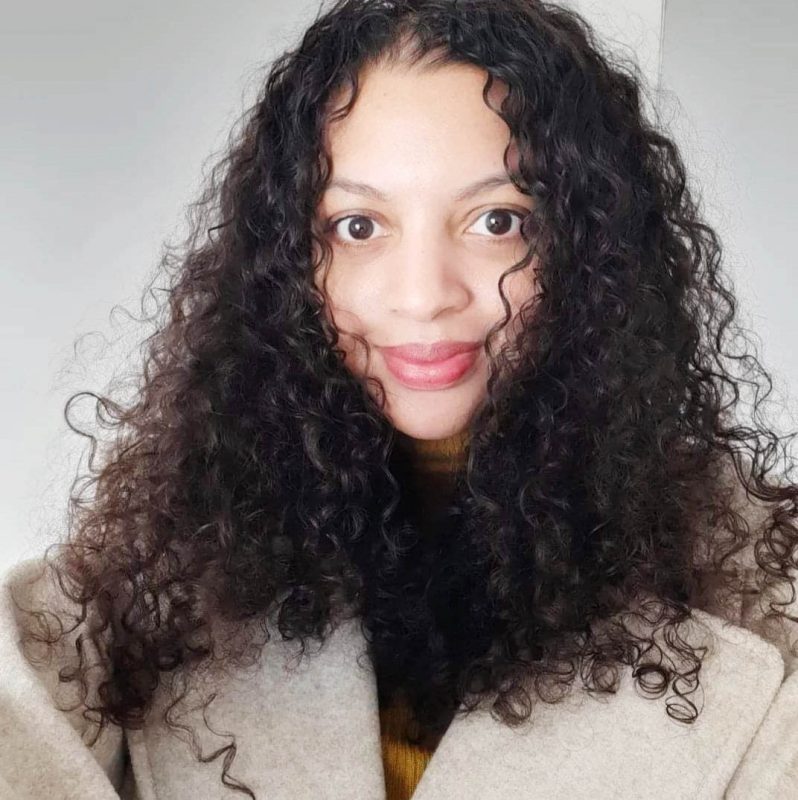
The stories are everywhere. Some stories are told; some remain buried in order to ‘keep the peace’. Motivation to fight such ignorance is almost always very painful because it involves you truthfully interrogating where the biases stem from and constantly negotiating with people to see and accept you just the way you are.
Being born to Indo-Guyanese and Afro-Guyanese parents my curl type ended up being 3A. I didn’t learn much about my hair until I left for university. Growing up I always felt there was only room and acceptance for straight hair. Perhaps that reality too was heightened by the fact that my mom didn’t have the know-how to care for our hair and neither did the women who were left to care for us. How could they, though? Even with all their love and care, our hair was different and the surplus of information we have now was just not at our fingertips then.
Our hair was viewed as something to fix and treat. Each strand carefully brushed down. Each curl pattern smoothed over with a good dollop of hair lotion or gel to ensure order. To have frizz was to be untidy. This is what we heard and what I saw going to school.
My sister sometimes got her hair braided to control her frizz. They would be so tightly plaited that her forehead would be red after she came from the next door neighbour who did them. But the braids meant that for that week her hair would be easier to manage.
Saturdays were sometimes my favourite because it meant we would get blowouts and the flat iron would be passed through our hair. That meant an easy two days unless rain poured as you left the salon, or the shower cap wasn’t tightly secured while you showered. It felt like constant treatment for never not being acceptable enough.
I had been slowly conditioned to accept my hair as a flaw. At school I saw girls with other curl patterns being upbraided. Their hair was either too loose, not neat enough, or the hair accessories weren’t in accordance with the rules. They were publicly shamed and made to feel embarrassed. The comparisons were rife. Those in charge sometimes couldn’t understand how managing it was all so different.
I felt thankful that it was easier for me to get my hair into a ponytail, despite the fact that this came with a headache and heaps of gel which more than likely had loads of toxins. At around 17, my frustrations reached peak. I found myself in a small roadside salon not too far from a learning institution I was attending, with chemical straightener in my hair. I will never forget how my scalp burned.
We pay a heavy personal price every time we seek to control the agency of girls. For me, that price was roughly 19 years of my life. We open up the doors for long-term self-esteem issues when we override that agency and choose to uphold the colonial way of doing things. We don’t prepare girls for the world when we teach them not to be their brand of put together, but rather how to be scared and bullied into being something they are not. We teach them how to settle. We teach them to oppose individuality if they want to have a chance in the world when in reality this is what ensures that they actually have a chance. We teach them to blindly follow authority and to not challenge it even if the figures of authority do not have not the slightest clue how to nurture and empower their identity.
